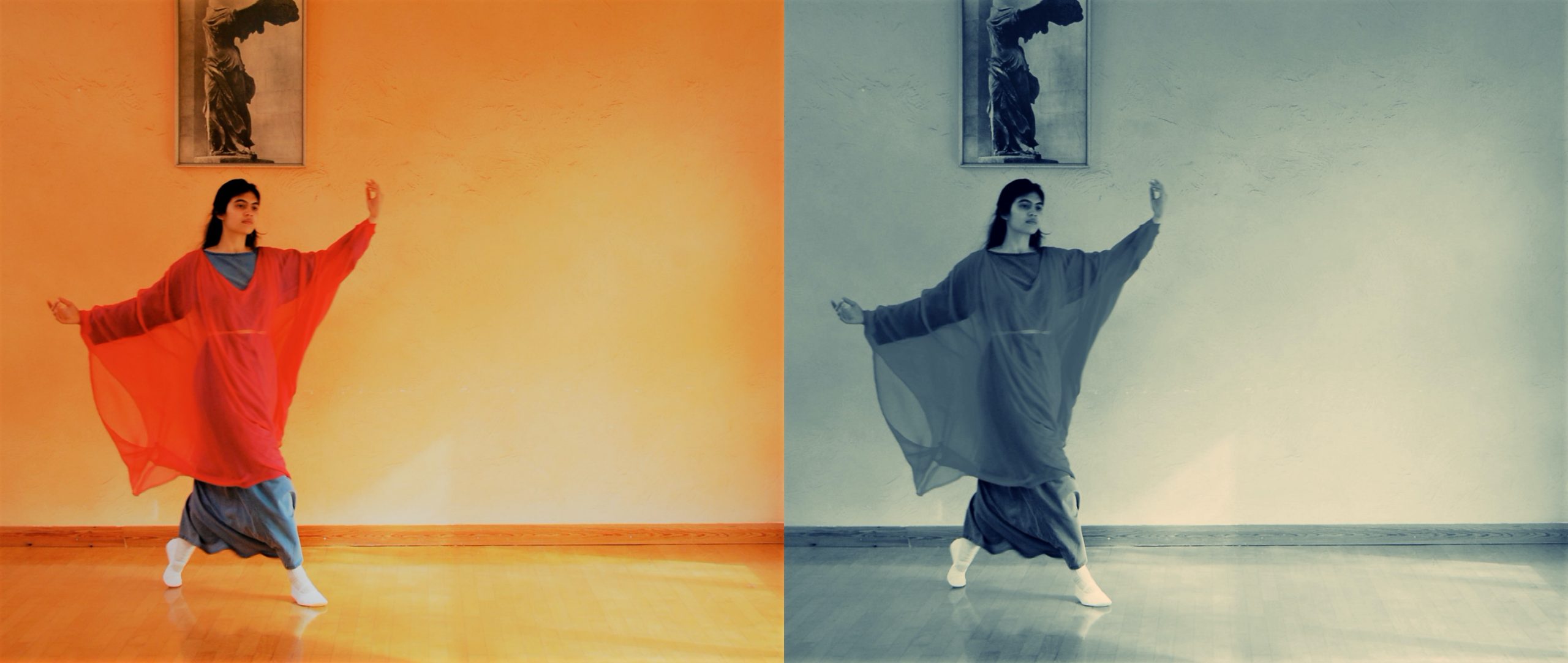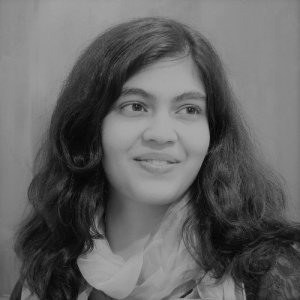Eurythmy: Connecting to the Audience through Movement
On some intuitive level, I’ve always sensed some of what the audience feels and even thinks of my performance in the moment. It’s a strange and wonderful link we share as performers with our audiences. Over time, it’s made me ask: what makes for an engaging, meaningful performance? Which parts are in my control, and which just aren’t?
I remember waiting in the empty space for a performance to begin, half nervous and half welcoming in the partially open, earthen brick-walled room. I held the urgent wish, as always, to meet the audience with something special and powerful, but I also felt incredibly vulnerable at the same time. In a way, I just wanted to hide.
It was March 2019 and the last day of a community festival that took place at a village women’s empowerment project in the south of India, where I was volunteering. My short solo performance, Love, Work and Service, included poetry by Rabindranath Tagore and Khalil Gibran and silent eurythmy. It was preceded by a more interactive and spirited folk music performance, with impromptu dancing that elicited much cheer and laughter from the audience. This had me even more anxious to meet the audience’s needs, knowing that I would soon be greeting them with a contrasting, contemplative mood.

India, 2019. Photo courtesy of Sahya Samson.
Eurythmy is an expressive movement art form originating in the early 20th century, from the work of Austrian philosopher Rudolf Steiner and his guidance of the first eurythmist, Lory Maier-Smits. The term eurythmy comes from the Greek, meaning beautiful, harmonious rhythm.
This relatively new art form makes use of the body as an instrument in movement to interpret poetry (or other spoken text) and live music, primarily through its sounds. The audience attending a eurythmy performance can both “see” and hear the music or spoken poetry. One of the first indications given by Steiner to the eurythmist is to find expressive movements for spoken sentences using the sounds of speech, so that the gestures become a “visible speech.”
Eurythmy is mostly performed in collaboration with either a speech artist or a musician. It can also be performed as a silent movement piece, for instance at the opening of events or gatherings. The eurythmist is always searching for an ever-new awareness of stage space and bodily movement—one that shapes and follows the flow of speech or instrumental music.

Sahya Samon. Photo courtesy of the performer.
Watching eurythmy is like being in a dream state, but in full consciousness. The colourful, long silk costumes are loose-fitting and draped in order to catch the rippling air that surrounds the eurythmist. The stage is typically lit with colourful changing lights, following a sequence of moods in a single piece or in the programme as a whole. The intellectual content or meaning of the poems and fairytale used in eurythmy, is not at the forefront; the movement lives artistically as rhythmic, formative, musical, soulful.
Not every poem, tale, or piece of music makes for good eurythmy choreography, and prose is less commonly used than verse because of its lack of rhythm and focus on concept rather than image. Typical selections for programmes include instrumental classical music, like a piano recital with movement; poetry, modern or classic; or fairytales and folktales. Tales are often interwoven with musical motifs, and the narrator and musician work closely with the eurythmist.
As a eurythmist, I see the stage space as either aiding or abandoning me in forming and maintaining a connection with the audience. The space is either alive with energy or is empty.
The art lies in the revelation of hidden worlds: through the moving body the inner experiences of poetry and music unfold as artistic expression. When I step onto the stage, I am stepping into a world I have created. My response to this created world reveals it to the audience, drawing them into it, taking them on a journey through it. Together we enter a world different from the everyday one.

Sahya Samson. Photo courtesy of the performer.
During the performance in India in 2019, I could at times perceive concentration and receptivity in the silence; but at other times I sensed a mild strain to comprehend what was going on. After the performance, I did receive some positive feedback: some were moved by the presence I brought to the space, others commented on the gestures, animatedly describing what it had expressed and meant to them. At the same time, there were many questions surrounding this art form of ‘eurythmy.’ Being coupled with philosophical poems and texts, there was a lingering feeling of unfulfillment and incompleteness. Was the serious, poetic mood of my performance a welcome contrast to the community festival, which buzzed with a colourful variety of attractions, activities, products, and short performances?
I soon realized that the event and setting posed different production and audience needs than I had anticipated or was familiar with. I usually perform on a proscenium stage, distant from the audience, appearing suddenly before their eyes as if straight from another world. I had grown accustomed to performing for the kind of audience who had a programme in hand and listened to some introductory words preparing them for what was to come. I was used to expectations set out in advance, right down to the advertising poster. What this audience needed, however, was more involvement, interaction, and breaking of the ice. In essence: the opposite of being distant.
I don’t consider that particular performance a success. But I did learn a lot about how not to make a connection with the audience.

India, 2019. Photo courtesy of Sahya Samson
A performance is created through reciprocity. The performer portrays and expresses; the audience receives and responds. As performers we can oftentimes perceive in the moment whether a joke was understood, whether a monologue was moving, or whether a question sparked interest or curiosity. In so many ways, the audience gives us feedback—constantly.
The “magic” that can happen between performer and audience, in the transient yet impactful moment of performance, is a desired outcome not fully in our control. This uncertainty leads to anxiety before a show, and even stage fright. What is in our control is treating the work as larger than ourselves—to evoke atmosphere in stage space.
For theatre practitioner Michael Chekhov, atmosphere is the magic, life, and truth of acting. It conveys the psychological aspect of the play, which goes beyond its immediate content. If you slip out of it, you slip out of the play’s world. The right atmosphere and mood for any performance or scene helps establish that special relationship with the audience, where both sides are energetically and actively participating, even co-creating the performance. The atmosphere created and invited by all involved, including director and set designers and by the sensitized actor, breathes life into the performance, making it unforgettable. The world of the play lives on well after the show is over, for audience and actor, in the form of its atmosphere.
There are different ways to create atmosphere, and Chekhov suggests developing a sensitivity and awareness for different atmospheres in real life. What atmosphere does a library have compared to a busy cafe or market? Another way to approach atmosphere is through colour moods. This could be looking at paintings or photos with specific moods or painting them yourself. As a movement artist, I have often found atmosphere comes most naturally in music or fairy tales, because the feeling evoked by them is above reason, and the characters are symbolic, even archetypal.

Sahya Samson. Photo courtesy of the performer.
Creating meaningful performances goes beyond preparing the right content for the right audience or event. It is neither a straightforward nor a controlled process. Building a relationship is an ongoing learning journey, one that asks the performer to stay true to her created world of the play, evoke it in the physical space, and be receptive to how the audience responds. Then, reflect and adjust. Many times, the atmosphere can turn out all wrong for the scene, or sometimes the audience just isn’t with you. But there will always be so much to learn by tuning in energetically and reading the signals.
While rehearsing and weaving together the recitation and silent movement for the performance in 2019, I was fully absorbed in the pieces themselves, and the right means for their expression to come into being and fill the space. I was able to bring the rich world of eurythmy to a new context, transferred into the warm and buzzing energy of the room. I was, however, left with the feeling that the journey of connecting to the audience still continues, as it does for any performer. A few days after the performance, it dawned on me that any given performance is simply a moment. It’s a window into the longer rehearsal process, and the eternal possibility for connection—for movement—between performer and audience.









Comments